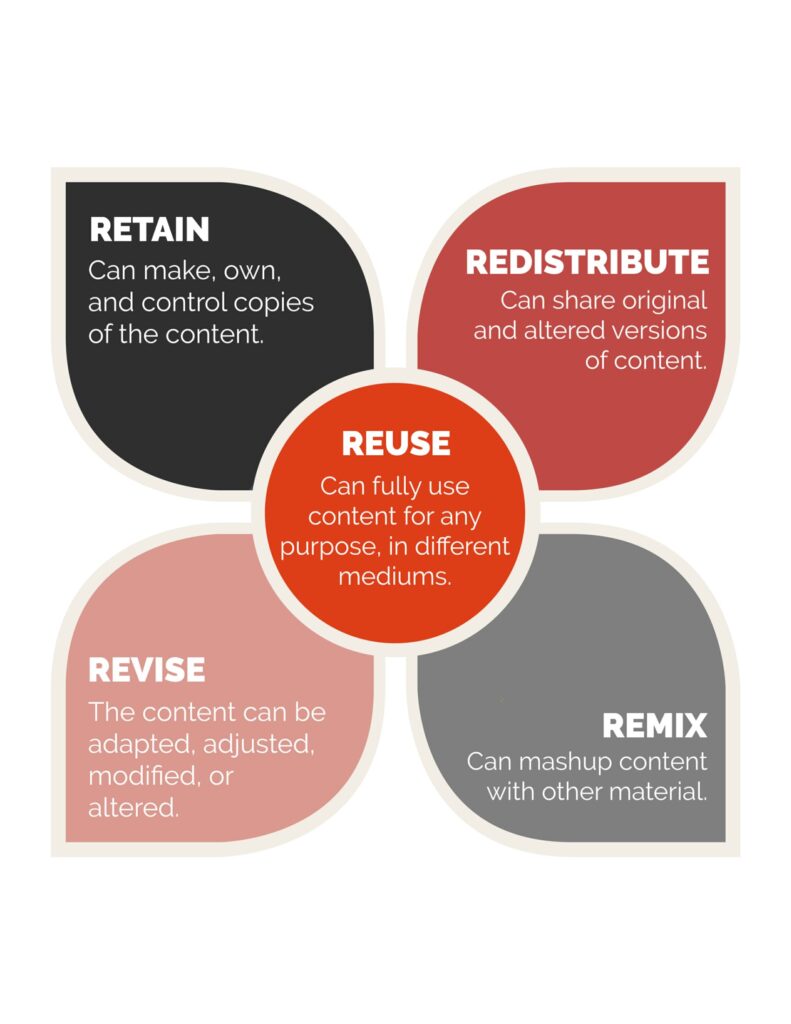Open Pedagogy
2 OER-enabled Pedagogy
Using open educational resources in a course grants complete freedom to the instructor and students to construct materials in relation to the context, time period and interests of the class. You can build an open textbook or supplemental course material with students. Though students may be beginners with some content, they are often adept at understanding what beginning students need in order to understand the material. Asking students to help reframe and re-present course content in new and inventive ways can add value to the open education movement while also allowing student work to have a greater impact once the course ends.
OER-enabled pedagogy is the set of teaching and learning practices that are only possible with the 5R permissions – retain, reuse, revise, remix, and redistribute – that are characteristic of OER.

The easiest way to confirm that an education resource is a true OER that provides you with the 5R permissions is to determine that the resource is either in the public domain or has been licensed under a Creative Commons license that permits the creation of derivative works – CC BY, CC BY-SA, CC BY-NC, or CC BY-NC-SA.
OER vs. Free Library Resources
Instrucctors use a mix of all-rights-reserved commercial content, free library resources, and OER in their courses. While the library resources are freely available to the College community, they are not free since the library has to pay to purchase or subscribe to them and not available to the general public.
OER, whether organized as open textbooks or open courseware, provide teachers and learners with a broad range of permissions that make education more affordable and more flexible. These permissions also enable innovative pedagogy in which students join the academic conversation by creating course materials that they can choose to share with an open license. This involves creating non-disposable assignments that have utility beyond the boundaries of the class time frame and scope.
Using open practices in the classroom enhances student engagement as well as addressing social justice issues in education. This podcast episode about re-mixing an OpenStax text showcases an example of leveraging the permissions of open licenses to adapt a psychology open textbook to make it more inclusive. The instructor then researched students’ sense of belonging and found that textbooks that incorporate diverse voices increase “belongingness for marginalized students.”
In Changing our (Dis)Course: A Distinctive Social Justice Aligned Definition of Open Education, the author connects the three principles of social justice (redistributive, recognitive and representational justice with open educational practices. The article makes a strong case for implementing OER and open pedagogy in the classroom.

